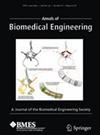Automated Quantitative Evaluation of Age-Related Thymic Involution on Plain Chest CT
Abstract
The thymus is an important immune organ involved in T-cell generation. Age-related involution of the thymus has been linked to various age-related pathologies in recent studies. However, there has been no method proposed to quantify age-related thymic involution based on a clinical image. The purpose of this study was to establish an objective and automatic method to quantify age-related thymic involution based on plain chest computed tomography (CT) images. We newly defined the thymic region for quantification (TRQ) as the target anatomical region. We manually segmented the TRQ in 135 CT studies, followed by construction of segmentation neural network (NN) models using the data. We developed the estimator of thymic volume (ETV), a quantitative indicator of the thymic tissue volume inside the segmented TRQ, based on simple mathematical modeling. The Hounsfield unit (HU) value and volume of the NN-segmented TRQ were measured, and the ETV was calculated in each CT study from 853 healthy subjects. We investigated how these measures were related to age and sex using quantile additive regression models. A significant correlation between the NN-segmented and manually segmented TRQ was seen for both the HU value and volume (r = 0.996 and r = 0.986, respectively). ETV declined exponentially with age (p < 0.001), consistent with age-related decline in the thymic tissue volume. In conclusion, our method enabled robust quantification of age-related thymic involution. Our method may aid in the prediction and risk classification of pathologies related to thymic involution.

 求助内容:
求助内容: 应助结果提醒方式:
应助结果提醒方式:


